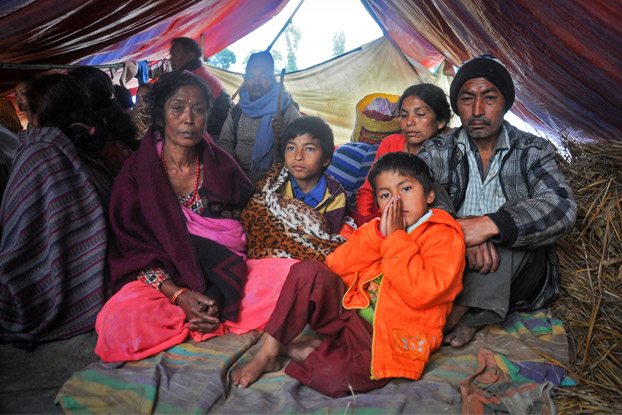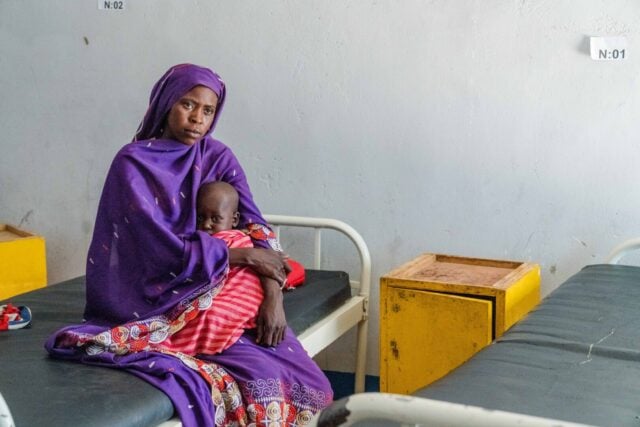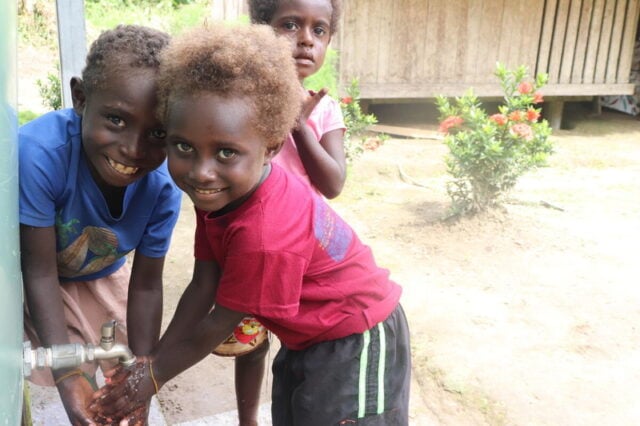A week after Nepal’s deadly earthquake, families are still living out in the open, in tents, in the cold, afraid of aftershocks and returning to unstable, damaged homes.
A few days ago, a stranger approached Kanchi, a mother of three, and asked to adopt her two boys.
See how World Vision works to protect children from a variety of dangers after disaster strikes.
* * *
After surviving Nepal’s deadly earthquake, Kanchi, a mother of three, says that her family faced another danger: Strangers wanted her two little boys.
Strangers approached her and her husband two days after the powerful tremor shattered their lives. After losing their home, the family lived out in the rubble-strewn streets. That’s where the strangers found them.
“I didn’t know who they were and why they wanted to take care of my sons,” Kanchi says. She says that the strangers offered to adopt her boys, 7-year-old Aaram Sai and 11-year-old Sri Krishna.
“I said, no! I don’t want to live separate from my sons. I don’t know if they approached any more families here.”
In the aftermath of a natural disaster, children continue to face dangers to their survival.
Nepal is already among the poorest and least-developed countries in the world. Children make up half the population and are also some of the most vulnerable people in any society as they can fall prey to abuse, exploitation, and neglect, World Vision officials say.
“Our first priority in a situation like this is the children,” says Rich Stearns, president of World Vision U.S. “Children are the most vulnerable to exploitation, disease, or the lack of shelter, food, and water. That’s why we do our best to quickly set up places where children will be protected.”
World Vision opened its first Child-Friendly Space (CFS) for children affected by the magnitude-7.8 earthquake that struck central Nepal on April 25. In the coming days, the organization will set up six more safe spaces in Tudikhel and Lalitpur to help address the emotional needs of children, like Kanchi’s boys, who were impacted by the quake. World Vision is also creating temporary learning centers in the same locations.
“There are immediate emotional needs as well as practical ones. Many children lost everything they knew when the earthquake struck. It claimed lives of parents and friends and reduced homes and schools to rubble,” says Arpanah Rongong, World Vision’s child protection specialist in Nepal.
“Child-Friendly Spaces are protected places for children to start coming to terms with this loss, giving them a bit of calm amid the chaos,” she says. “Young people often start expressing their emotions through artwork, which helps them start to make sense of the devastation around them.”
Child-Friendly Spaces are also important in keeping children away from dangerous places and protecting them from exploitation or abuse. Trained staff can identify and respond to children in need of counseling or medical care.
Kanchi and her children have been sleeping under a makeshift tent since the disaster. Their house is gone, and they couldn’t salvage any of their belongings.
“We don’t even have a change of clothes,” says Kanchi, deeply worried about the future of her family and boys. “And whatever the other people in our tent give us, we eat that.”
Aaram Sai says he is still scared. He remembers the earthquake: “I was playing outside, and suddenly I saw everyone running and buildings falling down. I was so scared, and my mother came and picked me up.”
The earthquake displaced as many as 2.8 million people. Every night, more than 40 people sleep under that one tent where Aaram Sai tries to rest.
Many families are sleeping outside for fear of aftershocks and being trapped inside their houses. Regardless, having to sleep outside in open spaces makes children vulnerable.
Children need so much support to be able to recover from catastrophe and disaster, and the odds are against them.
Children need safe shelter, but that is only the beginning. They need special protection.
Contributors: Chris Huber and Sevil Omer, World Vision staff
Help us keep children safe in the aftermath of the Nepal earthquake. Donate to our Nepal earthquake relief response.





Comments